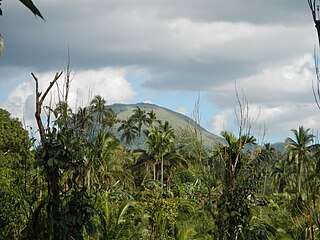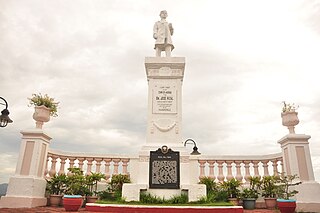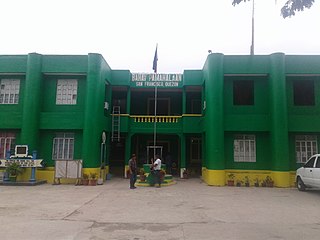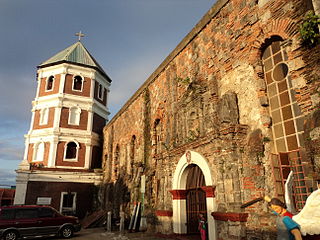Guinayangan | |
|---|---|
| Municipality of Guinayangan | |
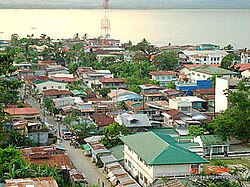 Hilltop view of the municipality | |
 Map of Quezon with Guinayangan highlighted | |
Location within the Philippines | |
| Coordinates: 13°54′N122°27′E / 13.9°N 122.45°E | |
| Country | Philippines |
| Region | Calabarzon |
| Province | Quezon |
| District | 4th district |
| Founded | June 21, 1845 |
| Barangays | 54 (see Barangays) |
| Government | |
| • Type | Sangguniang Bayan |
| • Mayor | Maria Marieden M. Isaac |
| • Vice Mayor | Norman D. Dublois |
| • Representative | Keith Micah DL. Tan |
| • Municipal Council | Members |
| • Electorate | 28,269 voters (2022) |
| Area | |
| • Total | 214.12 km2 (82.67 sq mi) |
| Elevation | 71 m (233 ft) |
| Highest elevation | 302 m (991 ft) |
| Lowest elevation | 0 m (0 ft) |
| Population (2020 census) [3] | |
| • Total | 44,045 |
| • Density | 210/km2 (530/sq mi) |
| • Households | 11,521 |
| Demonym | Guinayanganin |
| Economy | |
| • Income class | 3rd municipal income class |
| • Poverty incidence | 17.04 |
| • Revenue | ₱ 172 million (2020) |
| • Assets | ₱ 580.9 million (2020) |
| • Expenditure | ₱ 141.6 million (2020) |
| • Liabilities | ₱ 359.4 million (2020) |
| Service provider | |
| • Electricity | Quezon 1 Electric Cooperative (QUEZELCO 1) |
| • Water | Guinayangan Water District |
| Time zone | UTC+8 (PST) |
| ZIP code | 4319 |
| PSGC | |
| IDD : area code | +63 (0)42 |
| Native languages | Tagalog |
| Website | www |
Guinayangan, officially the Municipality of Guinayangan (Tagalog : Bayan ng Guinayangan), is a 3rd class municipality in the province of Quezon, Philippines. According to the 2020 census, it has a population of 44,045 people. [3]
Contents
- History
- Geography
- Barangays
- Climate
- Demographics
- Economy
- Culture
- Festivals
- Tourism
- Education
- References
- External links
The name of Guinayangan comes from the word "gayang", a poison extracted from a plant by the locals. It was used by the natives to infuse it in their spears and arrows which they used to repel the Moro invasions. The gayang became an important thing among the natives who lived peacefully as the Moros were repelled in every attack they made.
The natives who were infusing gayang to the arrows were spotted by the Spanish missionaries who wished to spread religious faith in the area. The missionaries ask for the "name of the place" in Spanish dialect. Due to the language barrier, the natives misinterpreted the question for "What are you doing" and answered "Ginayangan" or "We applied gayang". Ever since the place was known and pronounced "Ginyangan" omitting the "a" sound.
The municipality is home to the Maulawin Spring Protected Landscape and the critically endangered Inagta Lopez, a dialect of the critically endangered Inagta Alabat language, which has at most 30 speakers left in the world.














